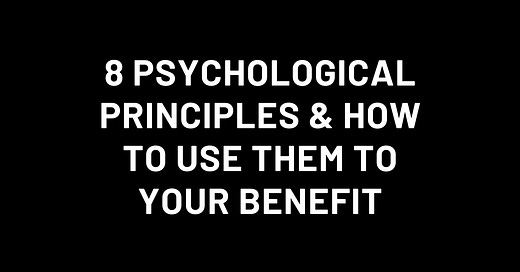8 Behavioral Psychology Principles & How To Use Them To Your Benefit
Hello friends 👋,
Welcome to the 12 new members of the Mastering Your Mindset community who have joined us since Monday. Join the 1.7k+ others who are learning to master their mindset.



